Bronze swords in battles and museums
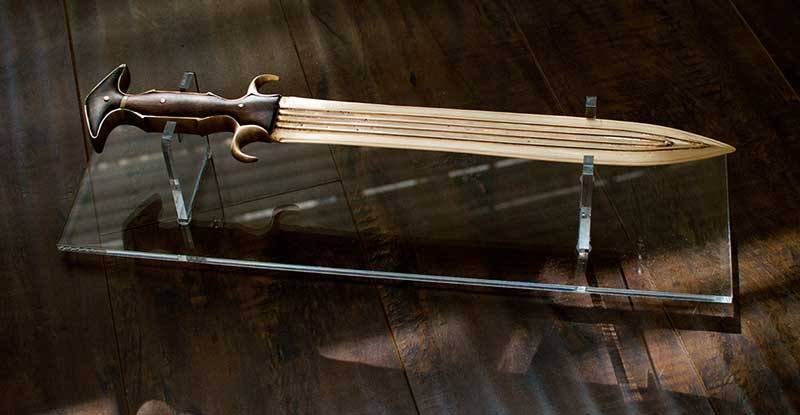
First Book of Chronicles 5:18
Puzzles stories. They say that they meet at every step. And that is why so many speculations have appeared around them. We know how to start, well, let's say, this or that product, is metal or stone ... We know how its “fate” ended - it was made, it is in our hands, it was found and you can hold on to it. That is, we know the points A and B. But we do not know the point C - how exactly this product was made and applied. True, this was, in general, more recently.
Today, the development of science and technology has come to the point that they allow the most amazing studies to be carried out, which give amazing results. For example, the study of microcracks on the tips of spears of Stone Age people made it possible to establish an amazing thing: at first they did not throw spears, but struck them, apparently, coming close to the victim or pursuing her with a run. And only then did people learn to throw spears. It also turned out that the Neanderthals struck with spears, but the Cro-Magnons had already thrown them, that is, they could hit the enemy at a distance.
It is clear that it would be simply impossible to detect by any speculation! Well, after the Stone Age, the age of metals came, and new types of research again helped to learn a lot about it. Well, for example, that the first bronze appeared was not tin, but arsenic, and this is surprising, because the smelting of such a metal was a very harmful occupation. So the replacement of harmful arsenic with harmless tin is by no means a whim of our ancestors, but a necessity. Other studies have been done on bronze. weapons. The fact is that it has long been found out that all cold steel began for some reason precisely with a sword - a stabbing weapon, not a chopping one, and even secured in a special way on a wooden handle! That is, the blades of the ancient, earliest swords of the handle did not have. And it's one thing a knife attached to the handle with the help of three transverse rivets. But a metal knife can do without a handle that is included in the handle, because it is short.
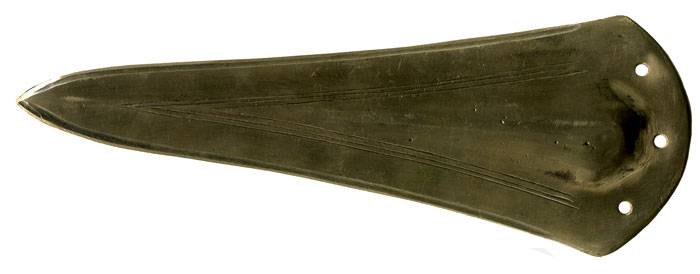
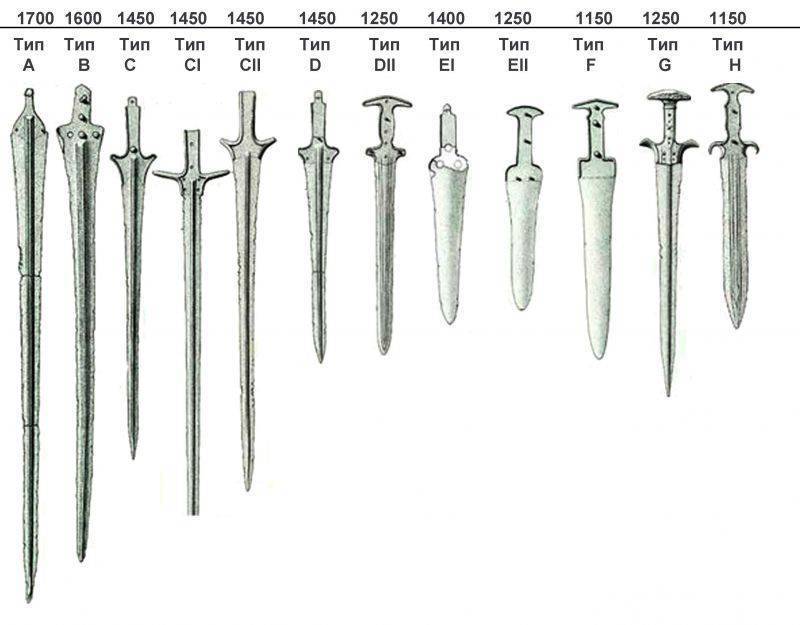
But what about the oldest rapier swords that were long? At VO, such ancient Bronze Age swords were already described. But since new data have appeared today related to the study of this weapon, it makes sense to again turn to this interesting topic.
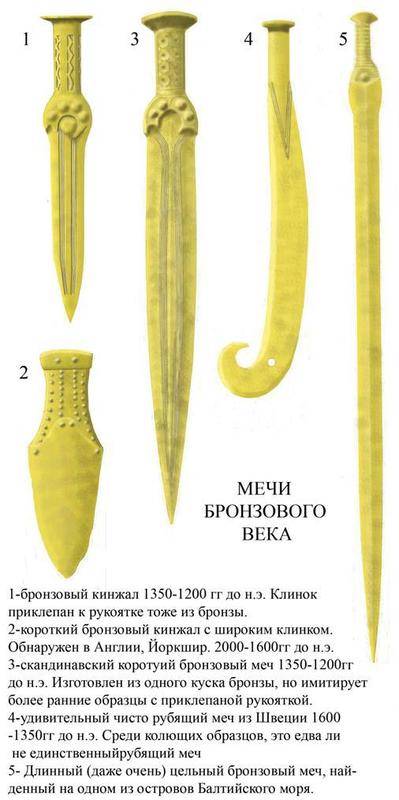
To begin with, it is not clear where and why it is not clear why and why some ancient blacksmith suddenly took and made using this technology not a knife, but a sword, moreover, with a blade more than 70 cm long, and even a diamond-shaped one. In which region of the planet did this happen and, most importantly, what was the reason for this? After all, it is well known that the same ancient Egyptians fought with spears, clubs with stone tops, axes, but they did not have swords, although they used daggers. The Assyrians also had long rapier swords, which we know from the images on the bas-reliefs. Europeans also knew such swords - long, stitching, and used by the ancient Irish, and Cretans, and Mykene, and somewhere between 1500 and 1100. BC. they had a very wide range of use! In Ireland, in particular, they were found a lot, and now they are stored in many British museums and in private collections. One such bronze sword was found right in the Thames, and similar ones - in Denmark and all in the same Crete! And everyone had the same fastening of the blade to the handle with rivets. They are also characterized by the presence of numerous stiffeners or ridges on the blades.
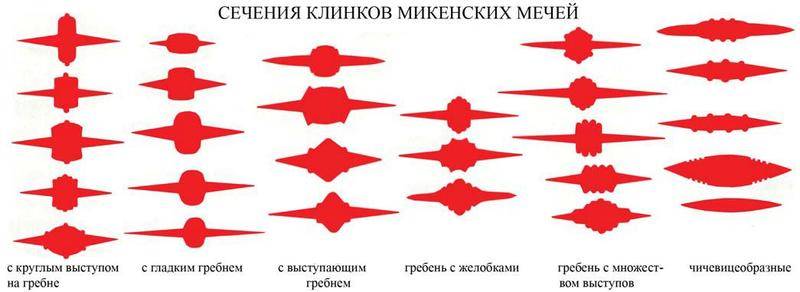
That is, if we talk about the heroes of the Trojan War, we should keep in mind that they fought with swords about one meter long and 2-4 cm wide, and their blades were exceptionally piercing. But what methods of armed struggle could lead to the appearance of swords of such an unusual shape is not clear. After all, purely intuitive chopping is much easier than pricking. True, there may be such an explanation that these rivets were the cause of the injection technique. They held piercing strokes well, since the emphasis of the blade on the handle fell not only on them, but also on the blade shaft itself. But instinct is instinct. In battle, he tells you that chopping the enemy, that is, striking him in a segment of a circle whose center is his own shoulder, is much simpler and more convenient. That is, anyone can swing a sword, in general, like brandishing an ax. It is more difficult to stab with a rapier or a sword - this must be learned. However, there are nicks on Mycenaean swords that say they used chopping blows, not just stabs! Although this could not be done, because with a strong side impact, the rivets easily torn a relatively thin layer of bronze of the blade shaft, which made it break off from the handle, became unusable and was suitable only for remelting!

Of course, this did not suit the ancient warriors at all, therefore, stabbing swords with a blade and a thin shank soon appeared, which were already cast as a whole. The shank was lined with plates of bone, wood and even gold to make a hilt convenient for holding the sword! Such swords could not only be pricked, but also chopped, without fear of spoiling the hilt, and in the era of the late Bronze Age, according to the famous British weapons historian Ewart Oakeshott, they were somewhere around 1100-900. BC. spread throughout Europe.
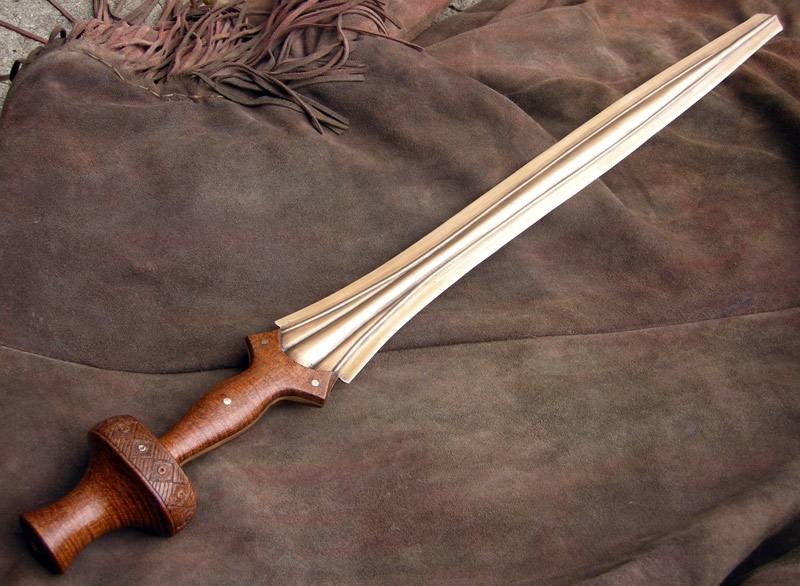
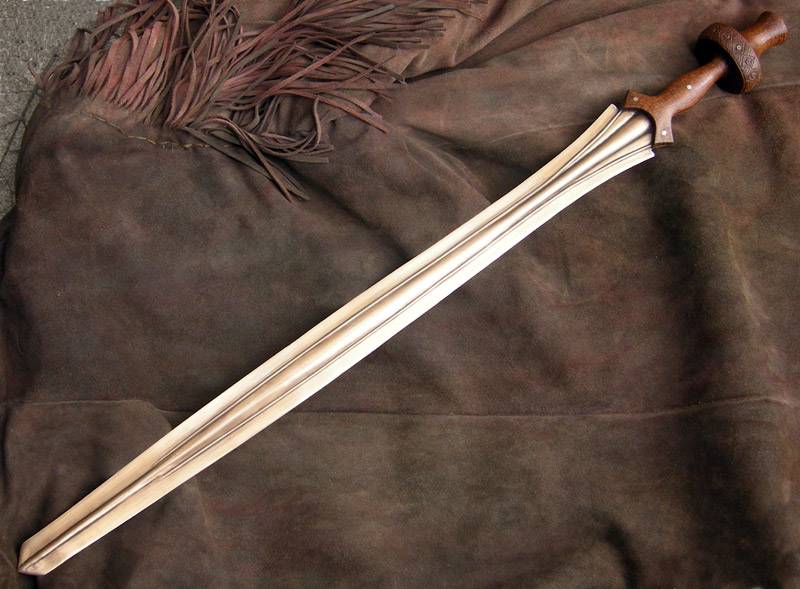
But then again something happened, and the shape of the swords once again changed in the most radical way. From barbed rapier, they turned into a leaf-shaped, like a gladiolus leaf pricking-chopping sword, in which the blade ended with a shank for attaching the handle. It was convenient to stab with such a sword, but the blow with its blade expanding to the tip became more effective. Externally, the swords became simpler, they ceased to be decorated, which was characteristic of an earlier period.
Well now, let's think a little. Thinking, we come to very interesting conclusions. Obviously, the first swords in Europe were stitching swords, as evidenced by the finds of Mycenaean, Danish and Irish specimens. That is, swords that required that they be fenced, and therefore, learned fencing techniques. Then fencing gradually began to give way to felling as a more natural way of combat, which did not require special training. The result was rapier swords with metal handles. Then fencing completely went out of fashion, and all the swords became purely chopping. Moreover, the swords found in Scandinavia have no signs of wear, and bronze shields made of very thin metal can not serve as protection in battle. Maybe “eternal peace” reigned there, and all these “weapons” were ceremonial?
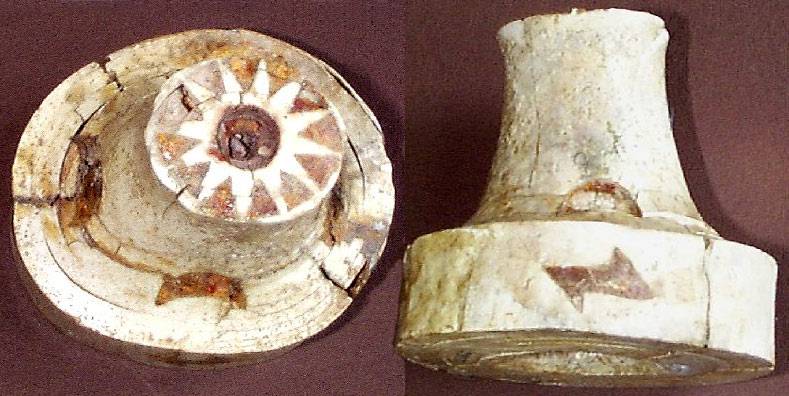
And the lower we descend on the timeline, the more we find professional warriors, although, reasoning logically (what many “people interested in history” like to do!), It should be just the opposite. It turns out that the most ancient warriors used sophisticated fencing techniques, using relatively fragile rapiers for this, but the later ones chopped swords from their shoulders. We know that Mykene warriors fought in solid metal armor made of bronze and copper, and even with shields in their hands, so it was impossible to hit them with a chopping blow. But in some joint or in the face, you could try to prick. After all, the very same helmets from strong boar fangs did not cover the faces of soldiers.
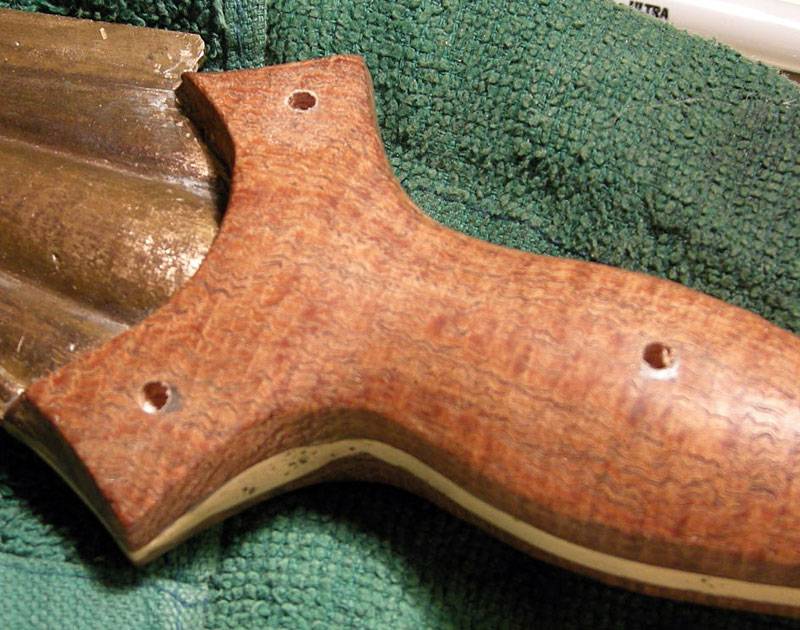
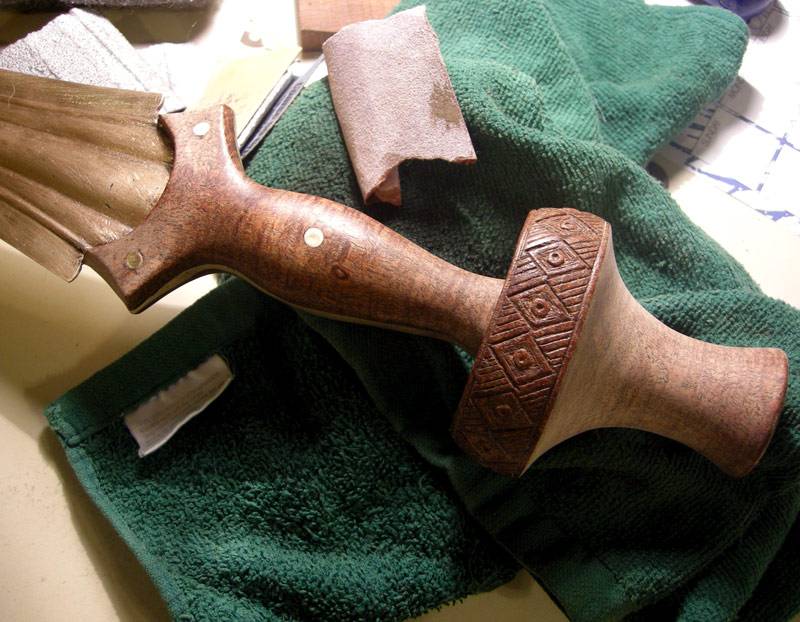
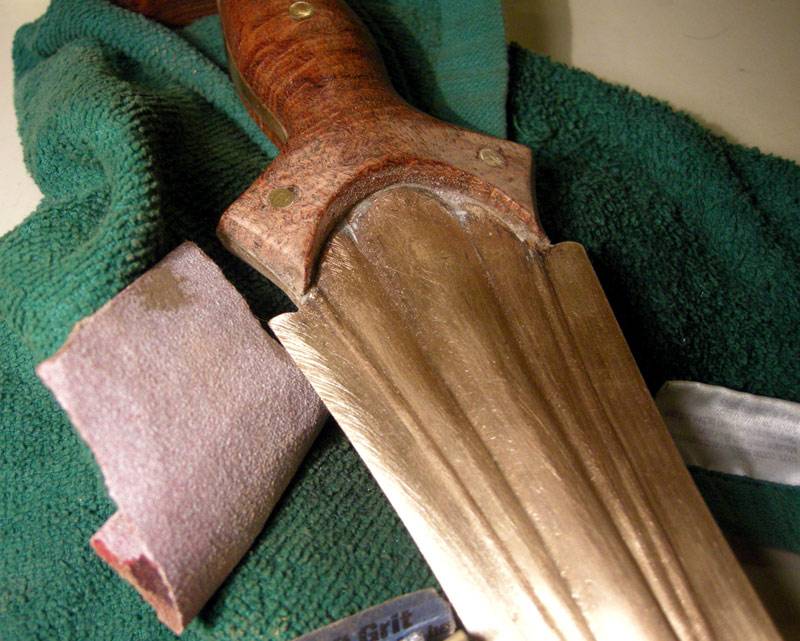
All of the above allows us to conclude that the appearance of pricking and chopping swords did not mean regression in military affairs, but testified to the fact that it acquired a mass character. But, on the other hand, the presence of a caste of professional warriors among the ancient Irish, as well as among the Mycenaeans and Cretans, cannot but surprise. It turns out that the caste of warriors among European nations arose before each man of his tribe became a warrior and ... received a stabbing-chopping sword! And it may well be that this was connected with the rarity of bronze weapons. Not everyone could give such a deadly but brittle sword, and that this situation changed only with time.
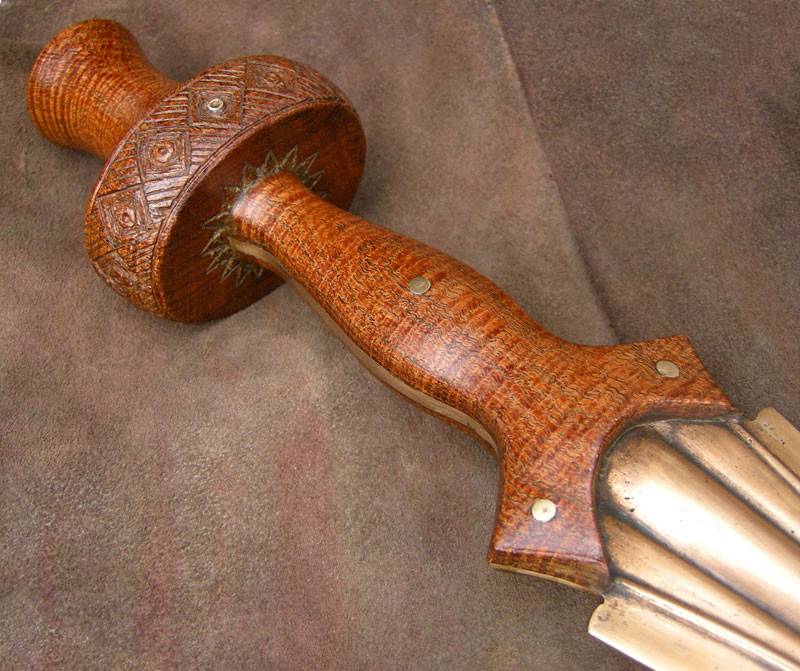
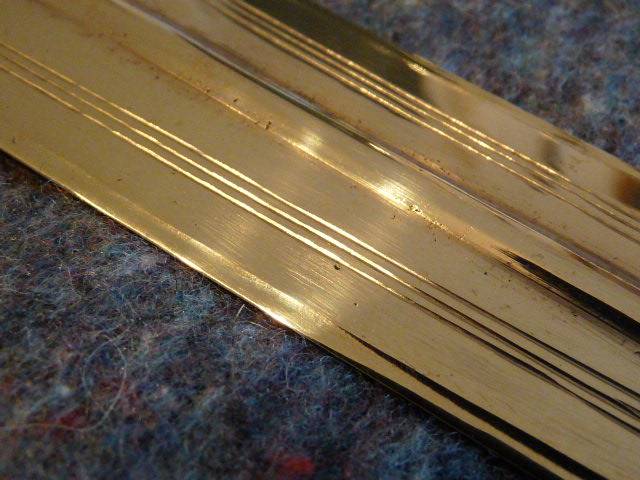
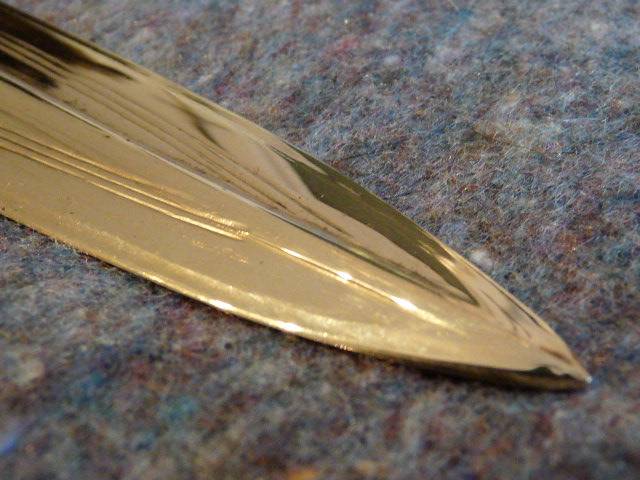
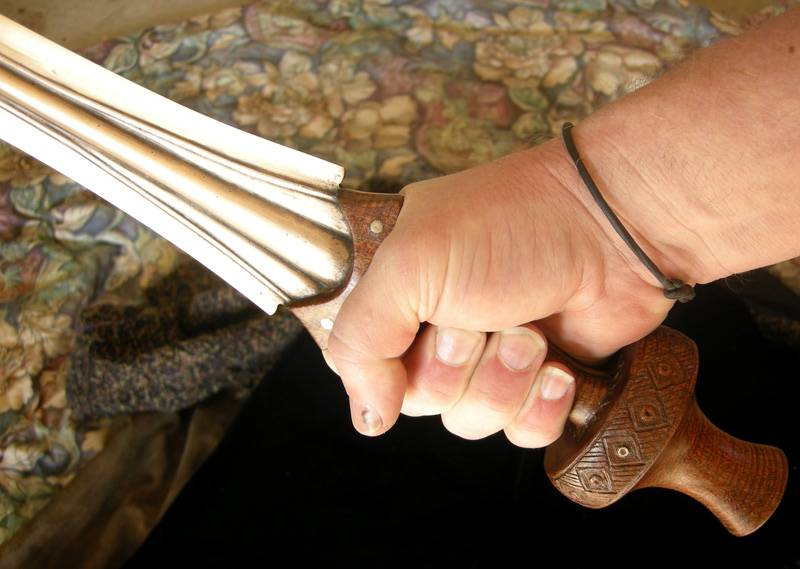
No less interesting is the study of the traces that ancient weapons left, as well as an assessment of its effectiveness. Engaged in such a very modern science as experimental archeology. And not only amateurs-subversors of "official history" are engaged in it, but also the historians themselves.
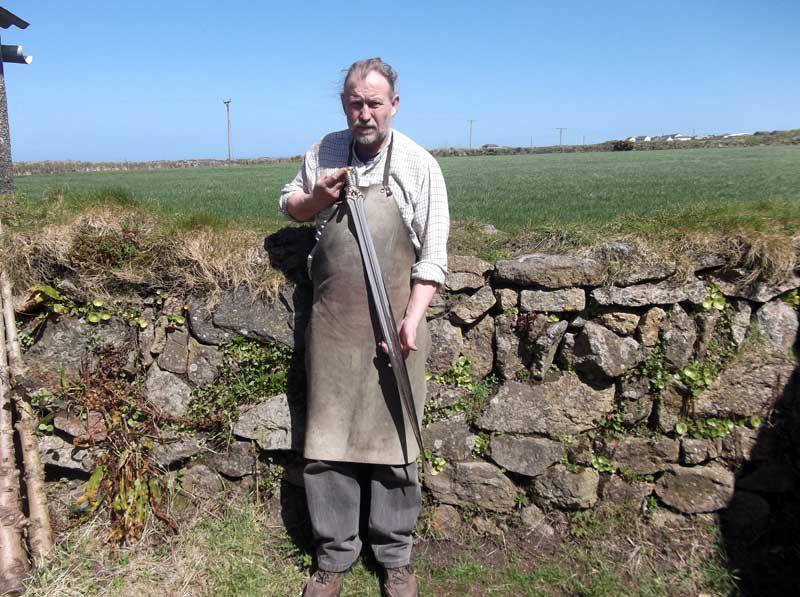
At one time, a number of articles were published on VO that mentioned the name of the English blacksmith and caster Neil Barridge. So, not so long ago he was invited to participate in a project on the study of weapons of the Bronze Age, which was initiated by a group of archaeologists from Great Britain, Germany and China led by Raphael Herman from the University of Gottingen.
The task of experimental archeology is to understand how certain items found by archaeologists during excavations were put into practice, as they were originally used. In particular, it is experimental archeology that can tell us how the Bronze Age warriors fought with their bronze swords. For this, copies of ancient weapons are created, after which experts try to repeat the movements of ancient swordsmen.
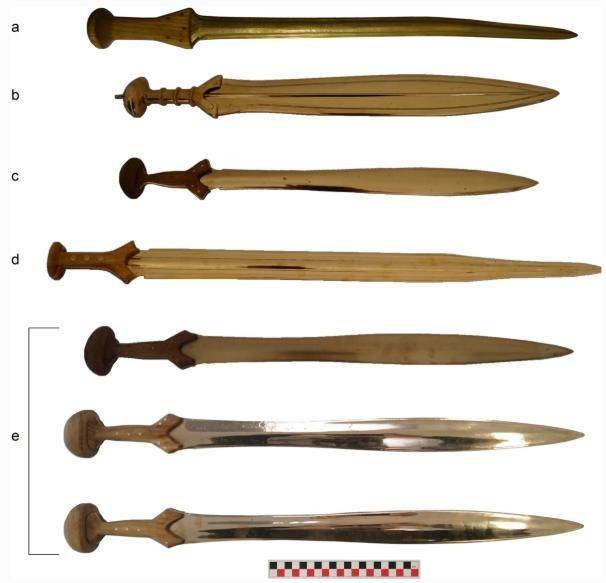
First of all, the origin of 14 types of characteristic dents and nicks that were found on the swords of that era was established. It was possible to find out that the soldiers clearly tried to avoid sharp blows so as not to damage the soft blades, but used the technique of crossing the blades without hitting them one against the other. But closer to the end of the Bronze Age, it became noticeable that the marks are grouped along the length of the blades more closely. That is, it is obvious that the art of fencing has developed and the swordsmen have learned to deliver more accurate strikes. The article was published in the journal Journal of Archaeological Method and Theory.



Then, analyzes of metal wear were performed. After all, bronze is a soft metal, so a lot of different traces, as well as scratches and notches, remain on products from it. And from them it is just possible to find out how a particular tool was used. But then, scientists increasingly check theoretical calculations in practice and try to get exactly the same marks on modern copies of ancient swords as on their originals.
Neil Barridge, who specializes in making weapons from bronze, was asked to make exact copies of the seven swords found in Britain and Italy dating from 1300-925. BC. And the composition of the alloy, and its microstructure, and micro-strength of the manufactured replicas exactly corresponded to the originals.
Then experienced fencers were found who struck with these swords, as well as spearheads, on wooden, leather and bronze shields. Each hit and parry was recorded on video, and all marks on the swords were photographed. Then, all the marks that appeared on the swords during this experiment were compared with signs of wear on the 110 Bronze Age swords that came to our hands from museum collections in Great Britain and Italy.
So work with the goal of “peering into our” past, including the past of ancient swords and warriors of the Bronze Age, is ongoing today and is by no means a fortune-telling on coffee grounds. The most modern research methods and instruments are applied. So the secrets of the past are gradually becoming less ...
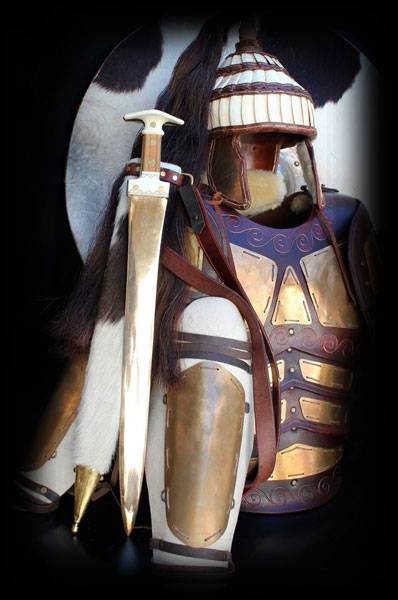
In particular, it turned out that when the sword hit the surface of the leather shield, either the edge of the blade was crushed, or a long notch appeared on its sharpened surface. If the blow was parried by the flat side of the sword, then the blade was bent by about ten degrees and long scratches appeared on it. Interestingly, such traces were found on only four swords. And this suggests that the soldiers carefully avoided the sharp blocking of blows, as it could lead to damage to the blade.
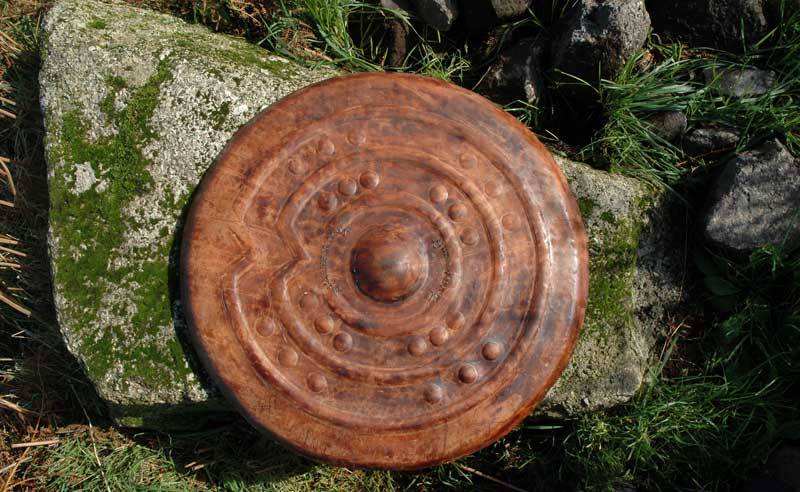
On the original swords stored in museums, there were many clusters of various marks, and in a small area of the blade there could be up to five such dents. A total of 110 blades found 325 (!) Clusters. And this is evidence that the Bronze Age warriors perfectly controlled their weapons and very accurately hit their opponents with blows that fell on the same section of the blade.
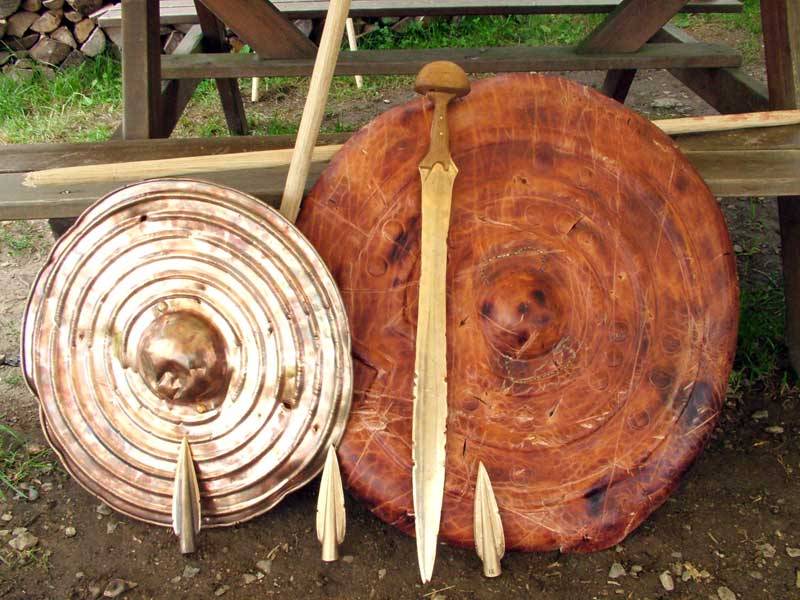
By the way, about which cold steel strikes (chopping or stabbing) are of great danger, the military of different countries argued for a very long time. And in the same England back in 1908 they armed the cavalry ... with swords, motivating it with the fact that the saber must be waved, but with the sword - just stabbing, which is faster and more effective!

PS The author and site administration are grateful to Aron Sheps for providing color schemes and illustrations.
PPS The author and administration of the site thank Neil Barridge for the opportunity to use photographs of his work.
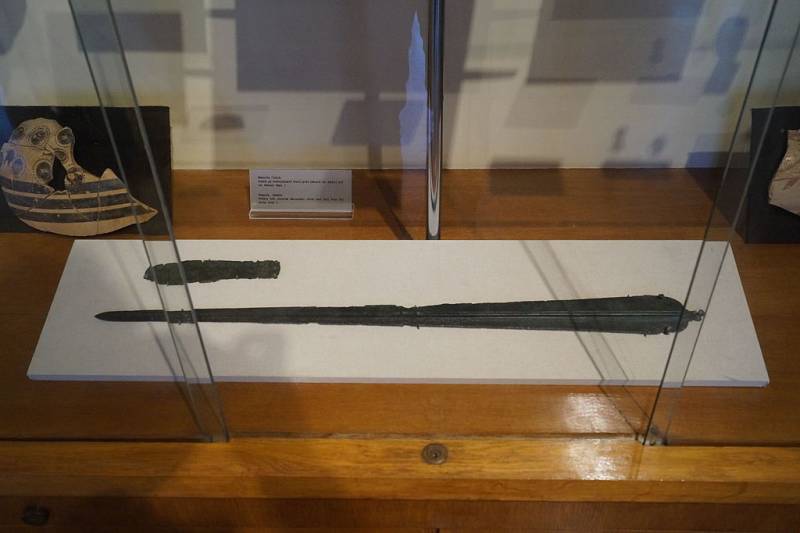
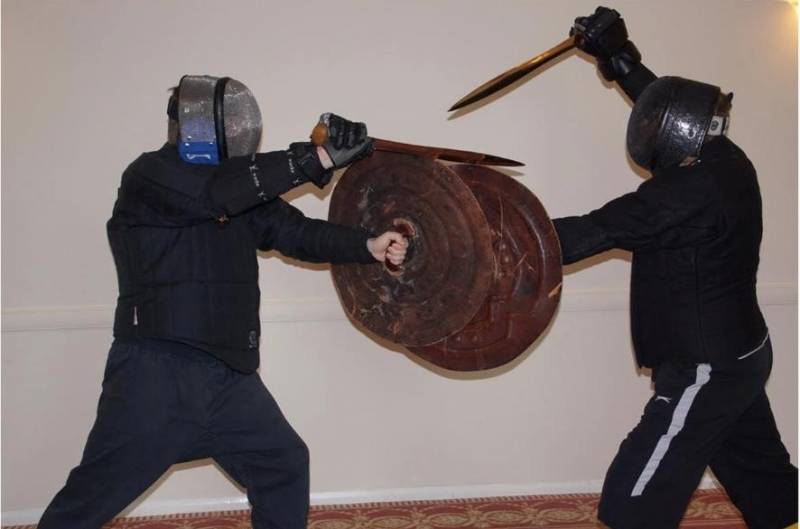
Information